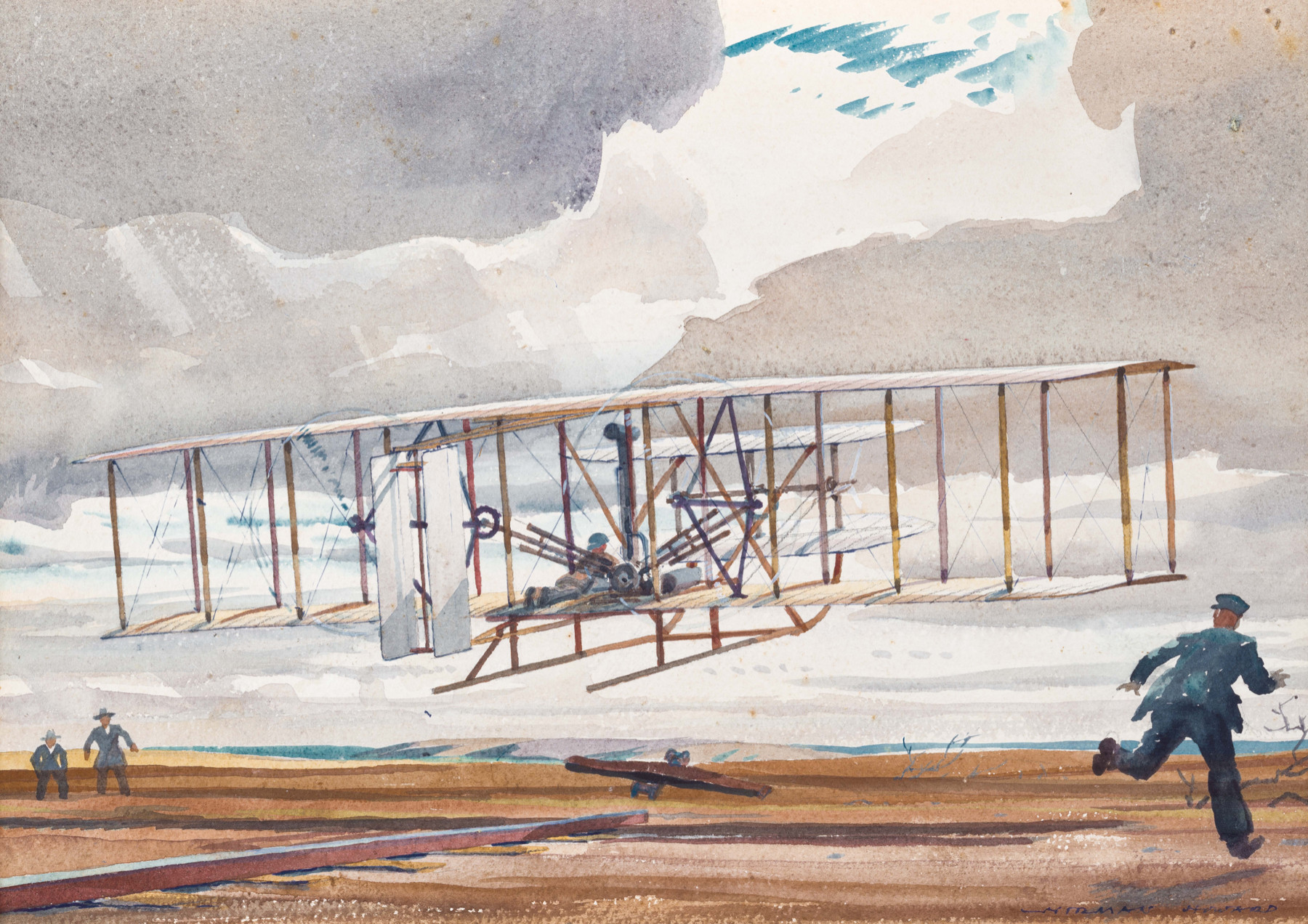
(click image to enlarge)
The Wright Flyer of 1903, was the first powered and manned aircraft to demonstrate sustained flight. Designed and built by Wilbur and Orville Wright in Dayton, Ohio, it was assembled in the autumn of 1903 at a camp on the isolated dunes near Kitty Hawk, North Carolina. The first attempt on 14 December failed, but the aircraft successfully flew four times on 17 December, covering distances of 120, 175, 200, and 852 feet respectively.
The Kitty Hawk’s strong but flexibly braced biplane structure was made of a framework of spruce and ash covered with a fine muslin cloth and the two contra-rotating propellers were powered by a four cylinder petrol engine. The pilot (both Wilbur and Orville alternated) lay on the lower wing with his hips in a padded wooden cradle, the movement of his hips as well as a small hand lever regulated the pitch and yaw and gave limited control.
Sadly, after the fourth flight on 17 December, a sudden gust of wind badly damaged the Kitty Hawk and it was never flown again. It was repaired and in 1928 it went on display in the Science Museum, London. It remained there for 20 years and in 1948 it was transferred for permanent display at the Smithsonian Institution, Washington.